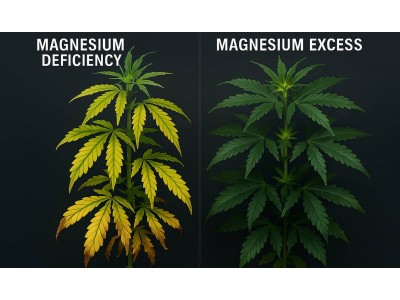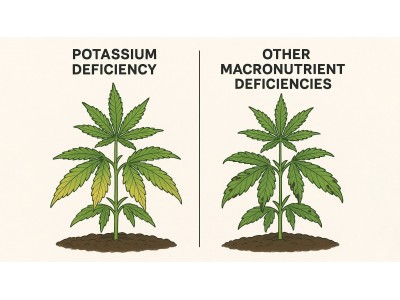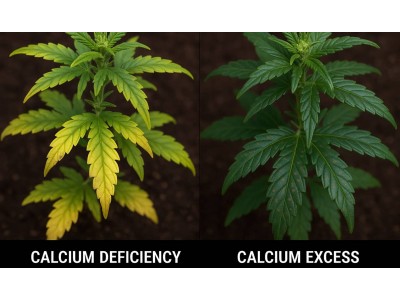0.00€
CheckoutMicroelements in the Cannabis Plant
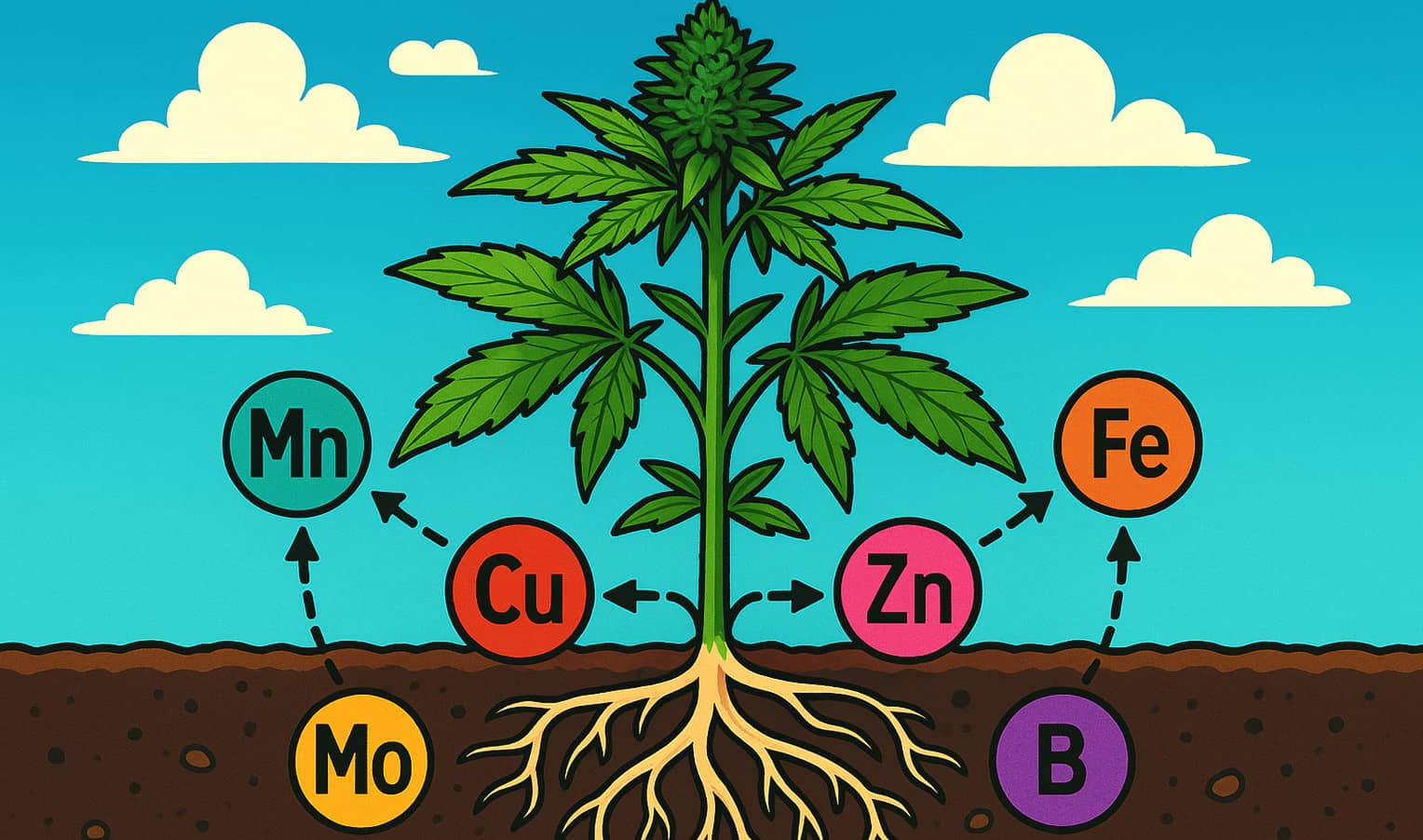
Experienced growers know: every detail affects plant health and yield. While attention is often focused on macronutrients (nitrogen, phosphorus, potassium), it is microelements that often act as the “invisible engine” of growth processes. Zinc, boron, sulfur, manganese, and other elements are required in minimal doses, but without them crucial enzymatic and metabolic reactions cannot function. Deficiency or excess of these substances can turn a promising harvest into a weak and problematic one.
The Role of Microelements in Cannabis Metabolism
Microelements are involved in many processes:
- Photosynthesis. Iron and manganese are part of enzymes that convert light, water, and carbon dioxide into energy.
- Chlorophyll synthesis. Zinc influences the formation of the green pigment, without which photosynthesis is impossible.
- Cell respiration. Zinc, iron, and copper participate in reactions where nutrients are converted into energy.
- Protein synthesis. Without microelements, hormones and enzymes responsible for cell growth and division cannot form.
- pH regulation and transport. Manganese and zinc help maintain acidity balance and move nutrients within cells.
Zinc
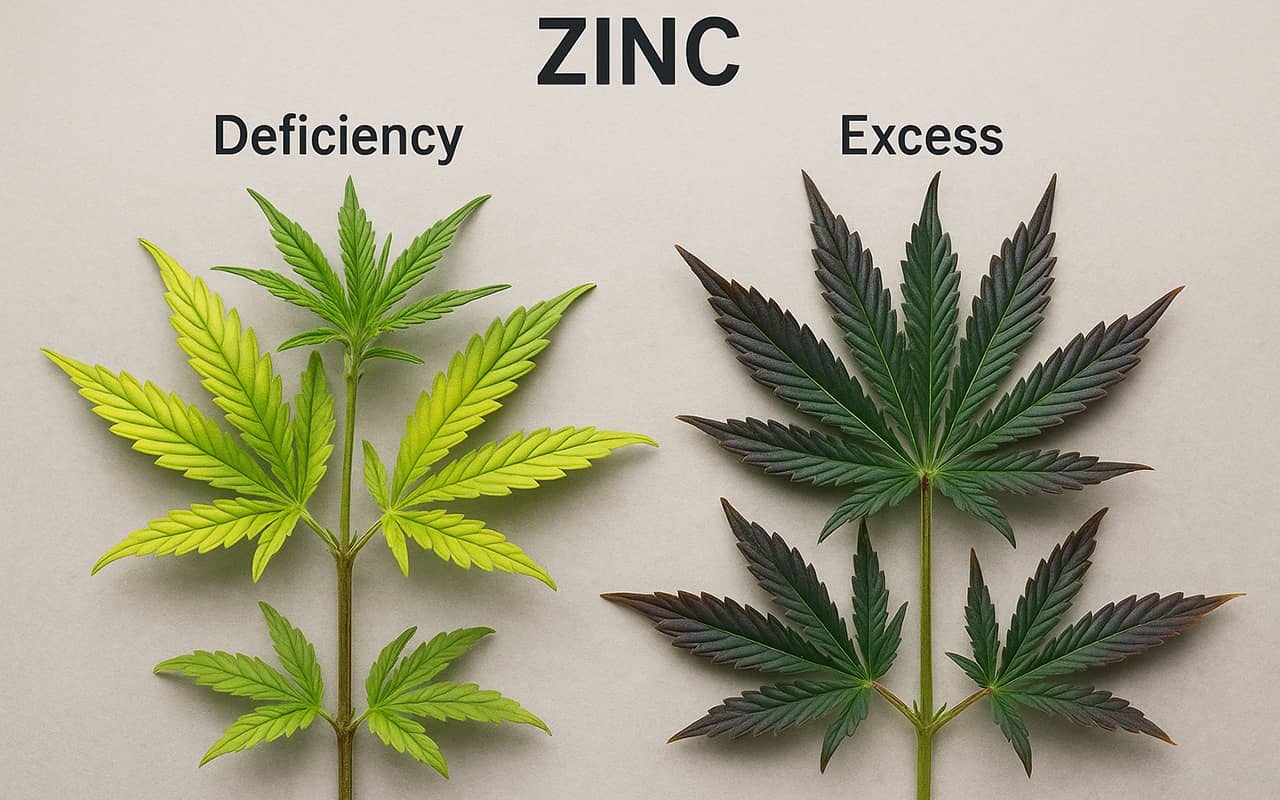
Zinc is responsible for the production of chlorophyll and growth hormones. Its uptake depends on pH and the presence of phosphates: excess phosphorus blocks zinc.
Deficiency manifests as chlorosis of young leaves, edge burns, growth retardation, and rosette formation. The situation can be corrected by flushing roots with enzymes and using fertilizers with easily available microelements. In severe cases, foliar spraying with zinc is applied.
Excess zinc is extremely toxic: plants quickly die, while iron deficiency develops in parallel. The solution is flushing the substrate and switching to light, balanced nutrition.
Boron
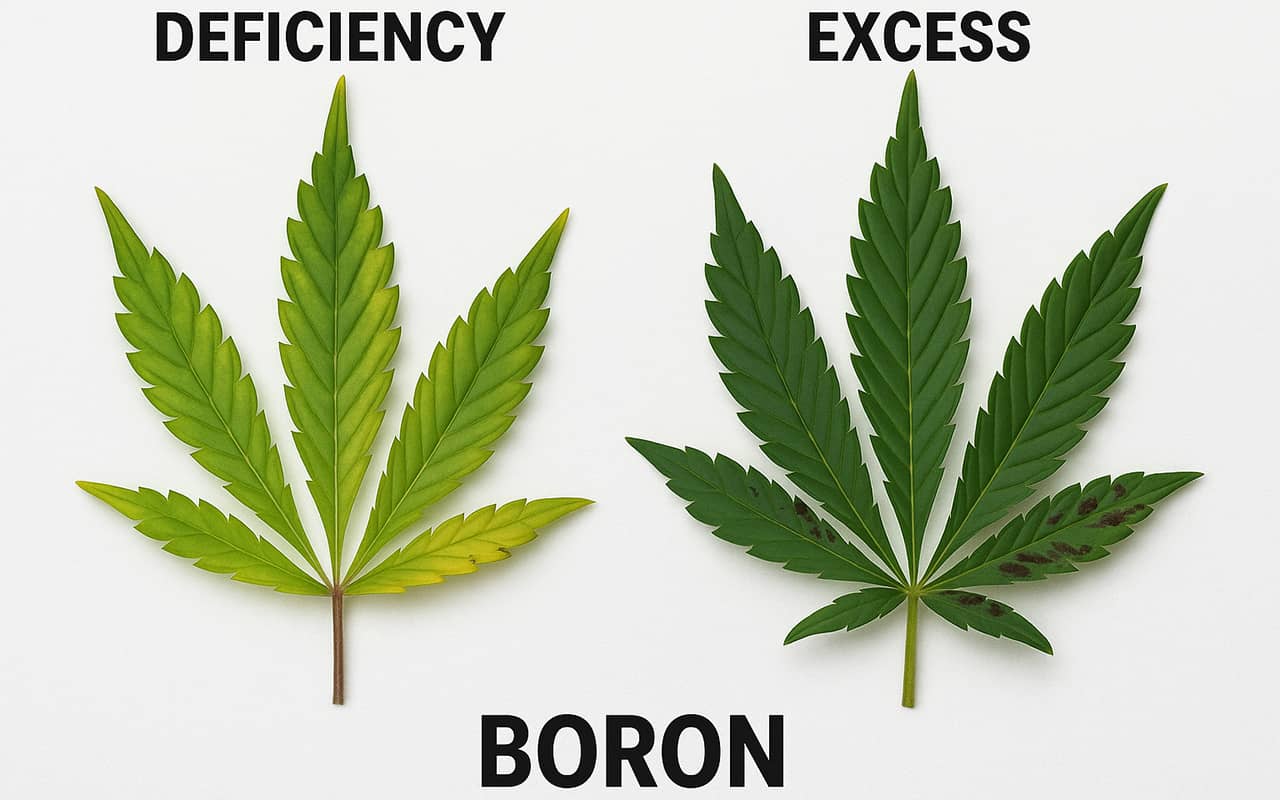
Boron participates in the formation of cell walls and the development of reproductive organs. It moves poorly within the plant, so deficiency is visible on young shoots. The optimal uptake range is pH 5.0–7.0.
Boron deficiency causes growth abnormalities, thickening and death of leaves, darkening and softening of roots, which provokes fungal infections. Problems may be exacerbated by excess nitrogen or calcium. The solution is watering with boric acid solution or fertilizers with boron chelates.
Boron excess is manifested by yellowing and necrosis of leaf edges. To correct it, flush the substrate thoroughly (pH around 6.0) and add enzymes to speed up cleaning.
Sulfur
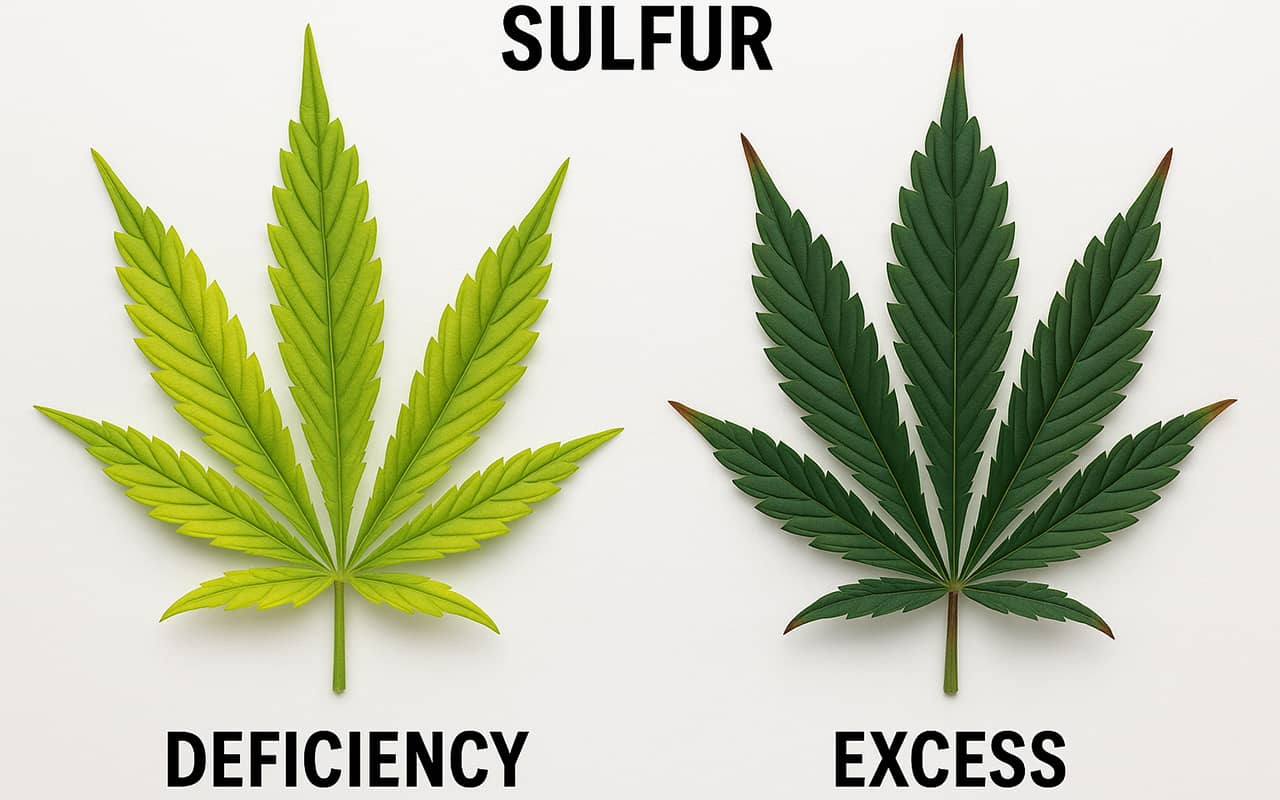
Sulfur is necessary for building amino acids and enzymes. Deficiency is rare when enriched substrates are used, but possible in depleted soils.
With deficiency, young leaves turn yellow from the top, and stems become woody and purple. It can be distinguished from nitrogen deficiency by the location of symptoms. Correction is watering with mineral sulfur-containing fertilizers.
Excess sulfur slows growth, leaves become smaller, tips show chlorosis and turn brown. The solution is flushing the soil with large amounts of water and restoring nutrition with a light complex of micro- and macronutrients.
Manganese
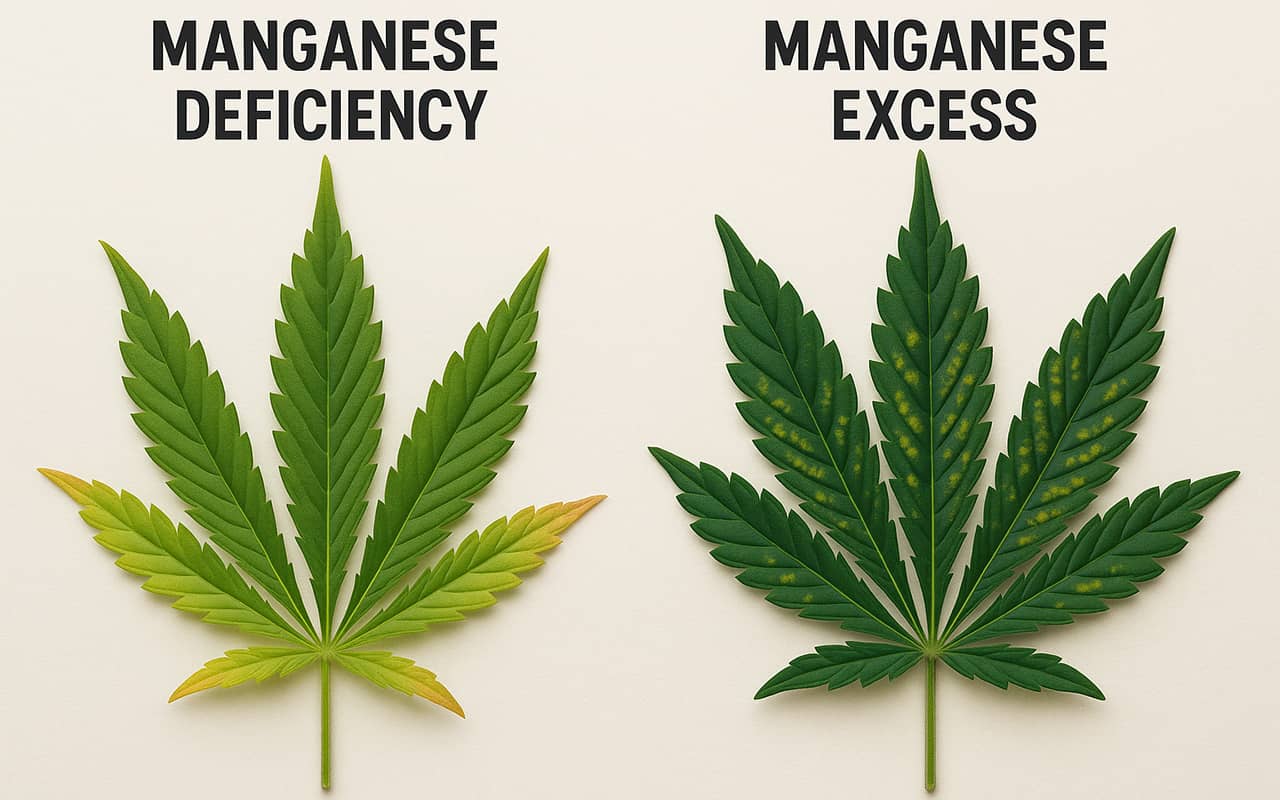
Manganese plays a key role in photosynthesis, participates in redox reactions, and helps plants cope with stress (drought, salinity, ammonia excess). It acts as an “energy transmitter” in cells and is involved in the splitting of water into oxygen and protons.
Manganese deficiency first appears on young leaves: growth slows and flowering is delayed. The solution is to stabilize pH and apply fertilizers with easily available microelements.
Excess causes orange, then brown spots to appear on leaves. At the same time, zinc and iron uptake is blocked. Correction is flushing the substrate and balancing pH.
Conclusions
In cannabis seed growing, microelements act “quietly,” but without them neither cell respiration, photosynthesis, nor tissue growth is possible. Deficiency of any of them immediately affects plant morphology, while excess can block the uptake of other substances. Balance is achieved by:
- maintaining stable pH;
- using quality fertilizers with microelement chelates;
- timely diagnosis by symptoms on leaves and stems.
Knowing the signs of deficiencies and excesses allows growers to adjust nutrition in time and harvest not just buds, but truly resinous and aromatic high-quality cannabis flowers.
The text is for information purposes only and does not contain cultivation instructions. Any handling of Cannabis plants must comply with the legislation of your country/region.


